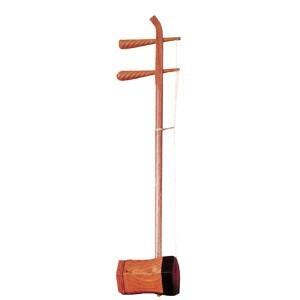How to play Erhu G bass 3
Have you paid attention to the comparison and comparison of many songs specially made for Erhu, all erhu performance of the main melody is not lower than the inner empty string tone, just like G (Erhu from 3 to 7 are bass notation), the inner empty string is bass 5, how can play a lower than 5 note 3!

The key sign of 1 = G is marked on the upper left corner of the score, instead of marking (5 ~ 2 strings). Therefore, the simple way to judge the score is to see if there is any string marked. If there is no string marked, it only proves that this piece is just an ordinary score, which has not been revised by the Erhu teacher, without marking the bow fingering and playing notes.
If the score is composed by the composer for the piano G, the range of vocal singing is less than two octaves, but the melody interval cannot only surround a group of octaves, for example, it can go down to a small group of letters, and go up to a small group of letters. In short, the range must span two groups (within two octaves). This is also the range that alto and treble singers can sing.
If you want to use Erhu solo bass 3 in G, you can only use 1 = bB (3 ~ 7 strings), so that you can really sound bass 3. Note: in Erhu solo, do not appear high pitch low pull, or low pull phenomenon. Note that many songs have been modified with the bow fingerings, and the key has been changed, just as the bass 3 in G can not be played and has been changed to 3 to 7 strings. Since it's only for solos, it can be raised or lowered, but it's not for the singer.
If someone takes the music, let you use erhu for ta accompaniment, as long as the ta tone is disc standard (2 ~ 6 tone fixed inside and outside empty string), then you can only use 5 ~ 2 strings for ta accompaniment (because the standard fixed empty string pitch, the inner string of the three fingers of the 1 tone corresponding to G, so that once there is bass 3 in the music spectrum, can only use a finger to press a higher octave of 3 tone.
In order to take into account the range of low, middle and high, the erhu used bass notes from 3 to 7 in the traditional tone. For this reason, the bass group appeared in the melody of singing the bass note (there is a little bit below the note). However, the inside and outside of the erhu are the middle note 2 and 6, where the bass came from? That's easy, fix it! The whole interval is moved up to a pure fifth, which is:
Ostinato: 1 2 3 4 5 6 7 i 2 3 4 5 6 7 i
Move up five degrees: 0 0 0 0 1 2 3 4 5 6 b7 i 2 3 4
By solving this problem, only one b7 change appears, which can be played with the black key.
The above method lets you understand the bass in the music score, and the erhu is through the whole shift to have the bass score notation and the bass name corresponding to the octave alto of the erhu. The piano has a large vocal range, which can go down and up at will. However, the Erhu gives full play to the pure octave harmony of the seven groups of piano with the same phonetic name and singing name, which is the reason why Erhu can break into the international music circle!
Knowledge expansion
For example, "Slow Three Six" Erhu duet, two erhu, each playing their own melody, using high and low octaves and broken chords to achieve different notes and harmonic effect, it is always more beautiful than two people playing the same melody. The second erhu pulls the 63 strings according to the standard fixed string of the first erhu, and the three transverse fingers of the lower part of the inner string are cut by 15. The first note is eight octave lower than the i note of the three fingers on the outer string of the first erhu. When two people play, as long as they pay attention to being in tune, they should not be able to seize the I note. Do not overplay the guest to highlight the main melody of 15 strings!
 渝公网安备 50010702504639号
渝公网安备 50010702504639号